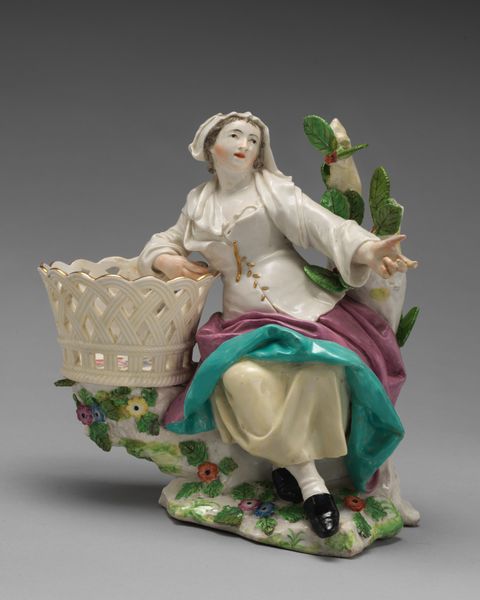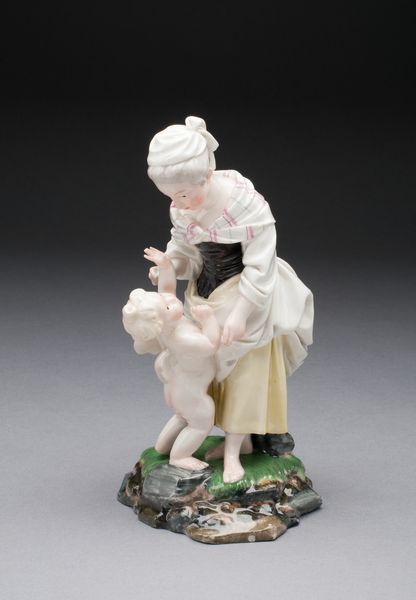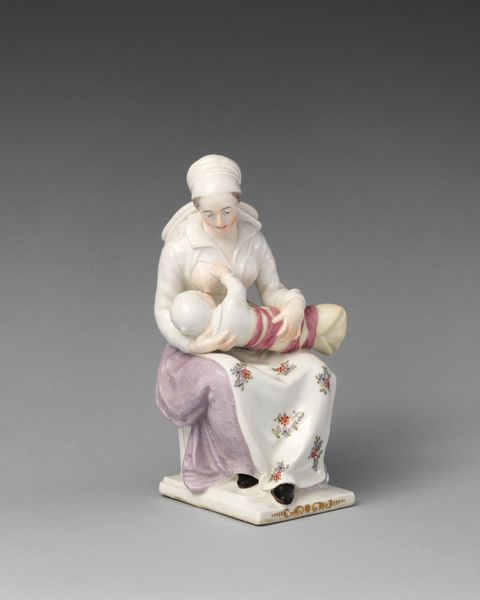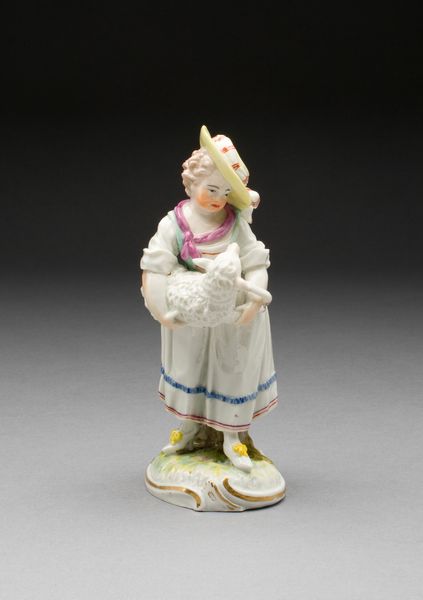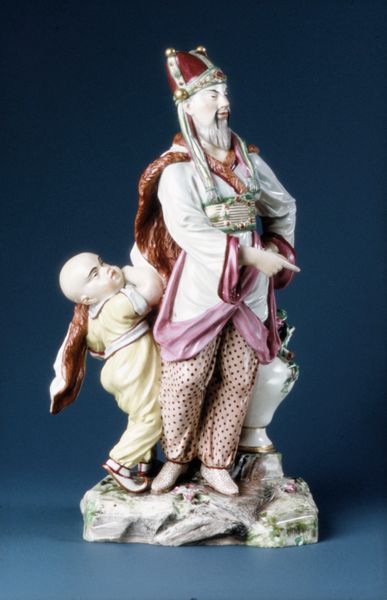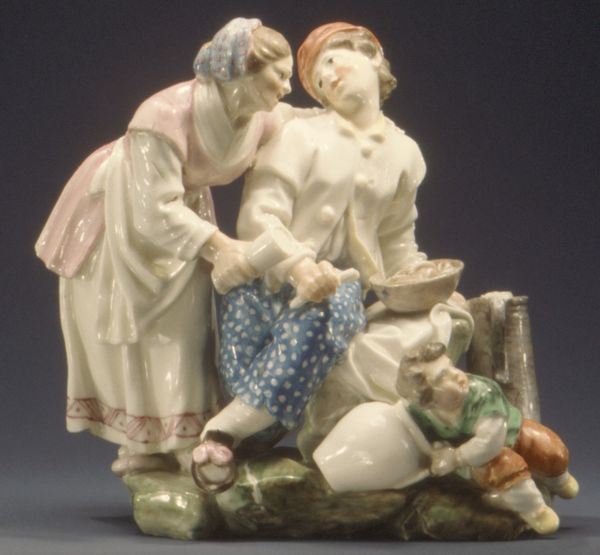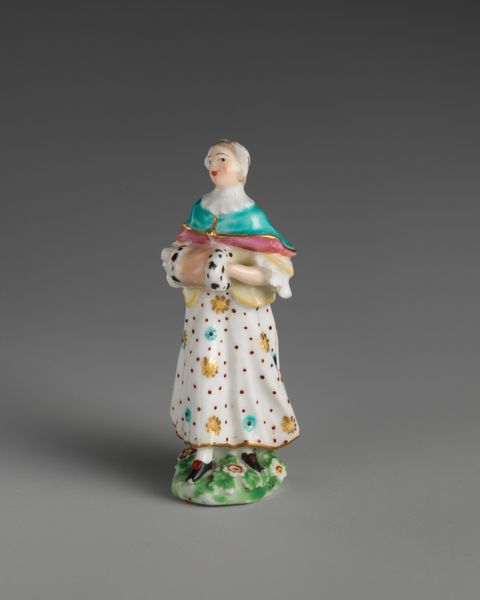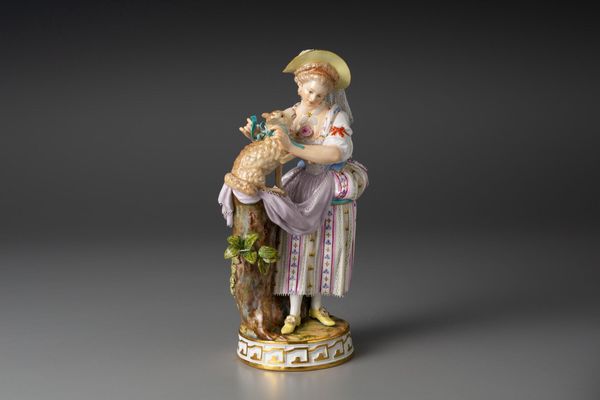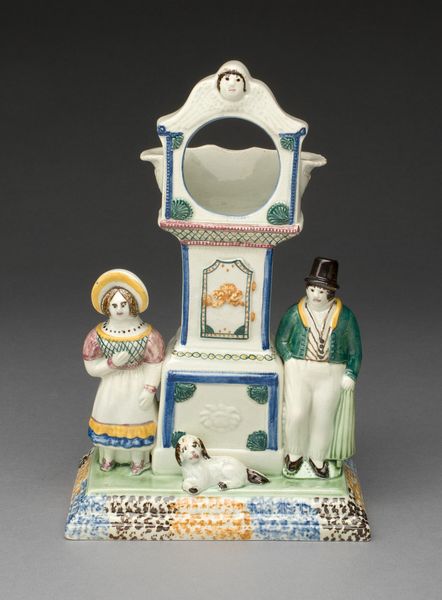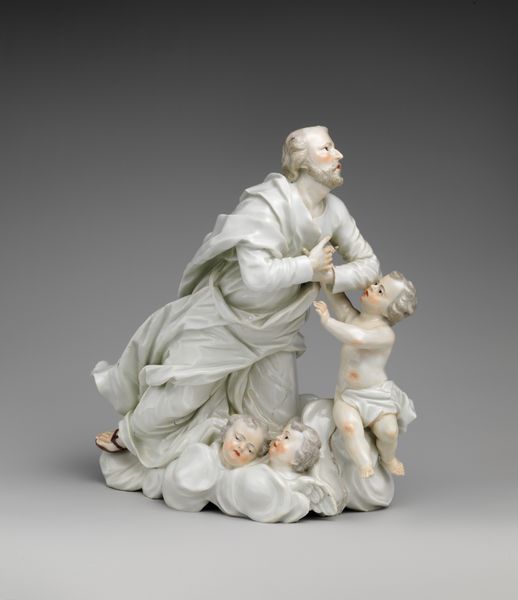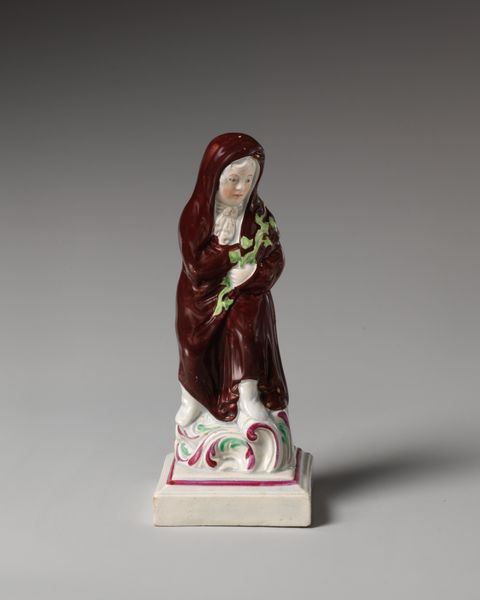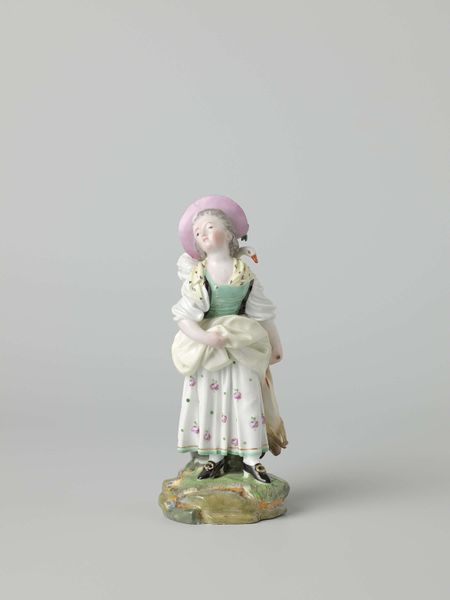
ceramic, porcelain, sculpture
#
ceramic
#
porcelain
#
figuration
#
madonna
#
child
#
sculpture
#
decorative-art
#
rococo
Dimensions: Height: 8 1/4 in. (21 cm)
Copyright: Public Domain
Editor: Here we have "Virgin and Child," made from porcelain by the Chelsea Porcelain Manufactory between 1750 and 1760. It’s quite striking! I’m fascinated by how detailed and delicate the figures are. What do you make of the composition, with the Madonna seated on the globe? Curator: The composition invites close reading. The Rococo style is clearly present in the flowing lines and ornamental details, but I’m more intrigued by the relationship between the figures and the globe itself. Note how the Madonna isn’t merely placed upon it; she seems to emerge from it. What does that imply about her relationship with the world? Editor: It’s as though she's giving birth to the world, or perhaps reigning over it spiritually? But, I also wonder, how does the use of porcelain enhance or alter the artwork’s overall meaning? Curator: Precisely. Porcelain, as a material, signifies refinement, fragility, and the artifice of courtly life. By representing the Virgin and Child in such a medium, we're not simply presented with a devotional image, but a meditation on earthly and heavenly power and a dialogue between these themes. Do you see how the folds of the robes mimic the shapes of waves, suggesting the earthly and heavenly meeting. Editor: That's insightful. It gives a richer understanding, doesn't it? Seeing how the formal elements contribute to its overall impact. Curator: Indeed. Considering the color palette, texture, and placement, it challenges us to perceive art beyond mere representation. Editor: I hadn't thought of it that way, I'm grateful for a new way of analysing artworks through materiality and composition! Curator: The pleasure is all mine.
Comments
No comments
Be the first to comment and join the conversation on the ultimate creative platform.
